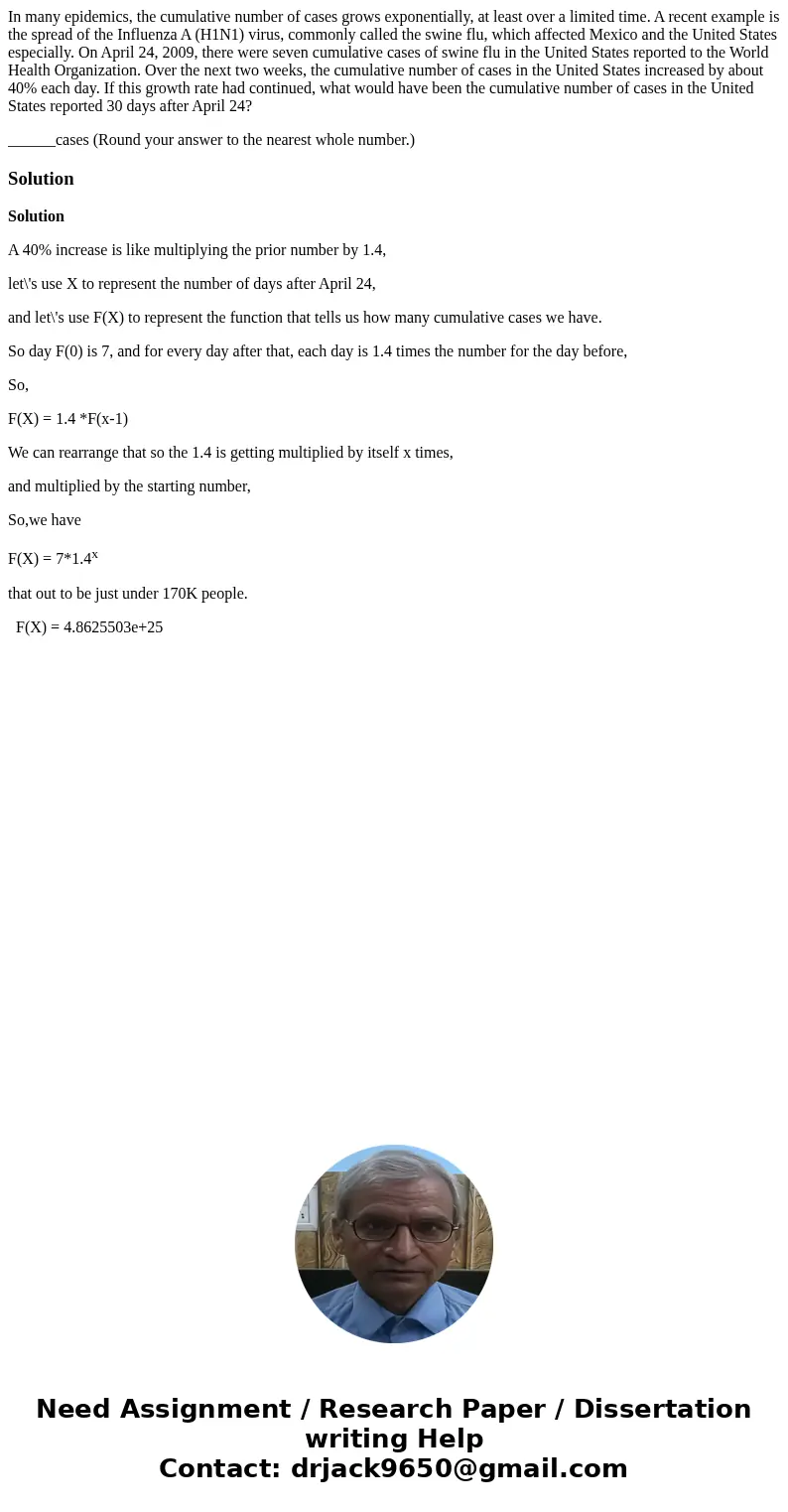In many epidemics the cumulative number of cases grows expon
In many epidemics, the cumulative number of cases grows exponentially, at least over a limited time. A recent example is the spread of the Influenza A (H1N1) virus, commonly called the swine flu, which affected Mexico and the United States especially. On April 24, 2009, there were seven cumulative cases of swine flu in the United States reported to the World Health Organization. Over the next two weeks, the cumulative number of cases in the United States increased by about 40% each day. If this growth rate had continued, what would have been the cumulative number of cases in the United States reported 30 days after April 24?
______cases (Round your answer to the nearest whole number.)
Solution
Solution
A 40% increase is like multiplying the prior number by 1.4,
let\'s use X to represent the number of days after April 24,
and let\'s use F(X) to represent the function that tells us how many cumulative cases we have.
So day F(0) is 7, and for every day after that, each day is 1.4 times the number for the day before,
So,
F(X) = 1.4 *F(x-1)
We can rearrange that so the 1.4 is getting multiplied by itself x times,
and multiplied by the starting number,
So,we have
F(X) = 7*1.4x
that out to be just under 170K people.
F(X) = 4.8625503e+25

 Homework Sourse
Homework Sourse